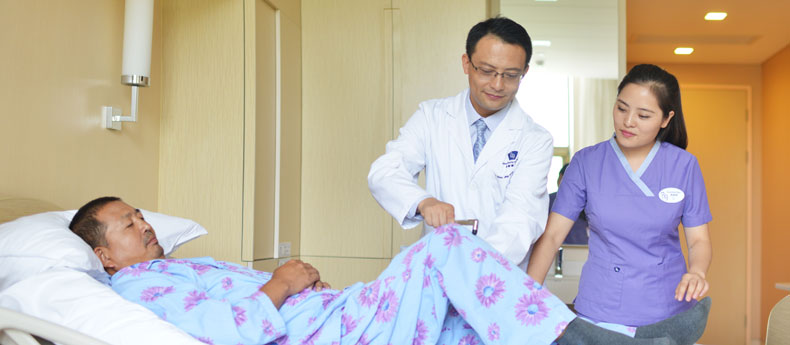Stroke Rehabilitation
Rehabilitation is an important part of treatment after stoke. The purpose is to help patients get function recovery, regain independence, improve quality of life, and return to society.
The severity of stroke complications and each person’s ability to recover lost abilities can vary widely. However, stroke rehabilitation can usually help achieve the best long-term outcomes.
What’s involved in stroke rehabilitation?
Stroke rehabilitation may include the following activities:
- Strengthening motor skills training to help stroke patients improve muscle strength and coordination, and recover the ability to walk .
- Therapy for communication disorders to help stroke sufferers regain lost abilities in speaking, listening, writing and comprehension.
- Mobility training including learning to use walking aids, such as a walker, cane or a plastic brace to stabilize and assist ankles.
- Range of motion therapy which uses exercises and other treatments to help lessen muscle tension(spasticity) and regain a fuller range of motion.
- Psychological evaluation, including assessing cognitive skills, counseling with a mental health professional, participating in a support groups, and using medicines if needed.
- Constraint-induced therapy, which restricts the use of an unaffected limb while practicing moving the affected limb, forcing stroke sufferers to use the affected arm or leg, thereby improving its function.
- Electrical stimulation, including using electricity to stimulate weakened muscles, causing them to contract and thereby helping with muscle re-education.
When should stroke rehabilitation begin?
Stroke rehabilitation should begin as soon as possible after a stroke. The first priority is to stabilize an individual’s medical situation and get life-threatening conditions under control. Doctors also take measures to prevent another stroke and limit any stroke-related complications. Once these steps have been taken, it’s common for stroke rehabilitation to start during theintensive care hospital stay. The sooner a person begins stroke rehabilitation, the more likely he or she is to regain lost abilities and skills.
How long does stroke rehabilitation last?
The duration of the stroke rehabilitation period needed depends on the severity of the stroke suffered and its related complications. While some stroke survivors recover quickly, most stroke survivors need some form of stroke rehabilitation long term, possibly months or years after their stroke. Each individual stroke rehabilitation plan will change during recovery as skills are relearned and as needs change.
Post-stroke rehabilitation can be a long process, and sometimes an individual can feel down or evenbecome depressed during the process. Such difficulties are common and normal. However, determination and perseverance with the support of good rehabilitation can help patients achieve maximum functional recovery.
Where does stroke rehabilitation take place?
Most stroke patients will begin the rehabilitation process while they are still in the hospital. Depending on each stroke patient’s needs and for the convenience of their family members, those engaging in stroke rehabilitation can choose:
Inpatient rehabilitation that allows a stroke patient to work closely at most hours of the day with our intensive rehabilitation therapy team while they stay in a comfortable inpatient room in our world-class hospital environment.
Outpatient rehabilitation wherebystroke patients can spend several hours a day with our expert team in the outpatient rehabilitation room for their training, while heading home to rest or spending time outside afterwards.
Home-based programs, whereby our expert therapy team designs and conducts a tailored rehabilitation program right in the privacy of your own home, allowingfor greater flexibility. This therapy program may be useful in many situations whereby a stoke sufferer might not need access to some of the world’s most specialized rehabilitation equipment found in our hospital, but rather seeks to work on simple programs in the comfort of their own home.
What factors affect the outcome of stroke rehabilitation?
Because stroke recovery varies from person to person, it’s hard to predict how many abilities might be recovered and how soon. However, in general, successful stroke rehabilitation depends on:
- The severity of the stroke
- An individual’s motivation and willfulness
- The skill of the stroke rehabilitation team
- Cooperation of friends and family — having a good support network can have a large effect on recovery
- Timing of the rehabilitation — the sooner one starts, the better they’ll do
- Ability to stick with rehabilitation activities outside of therapy sessions.
Copyright United Family Healthcare 2014 All right reserved - 京卫网审[2014]第1927号 - 京ICP备13017554号-4 医疗广告审查证明文号:(京)医广【2018】第12-28-1021号



